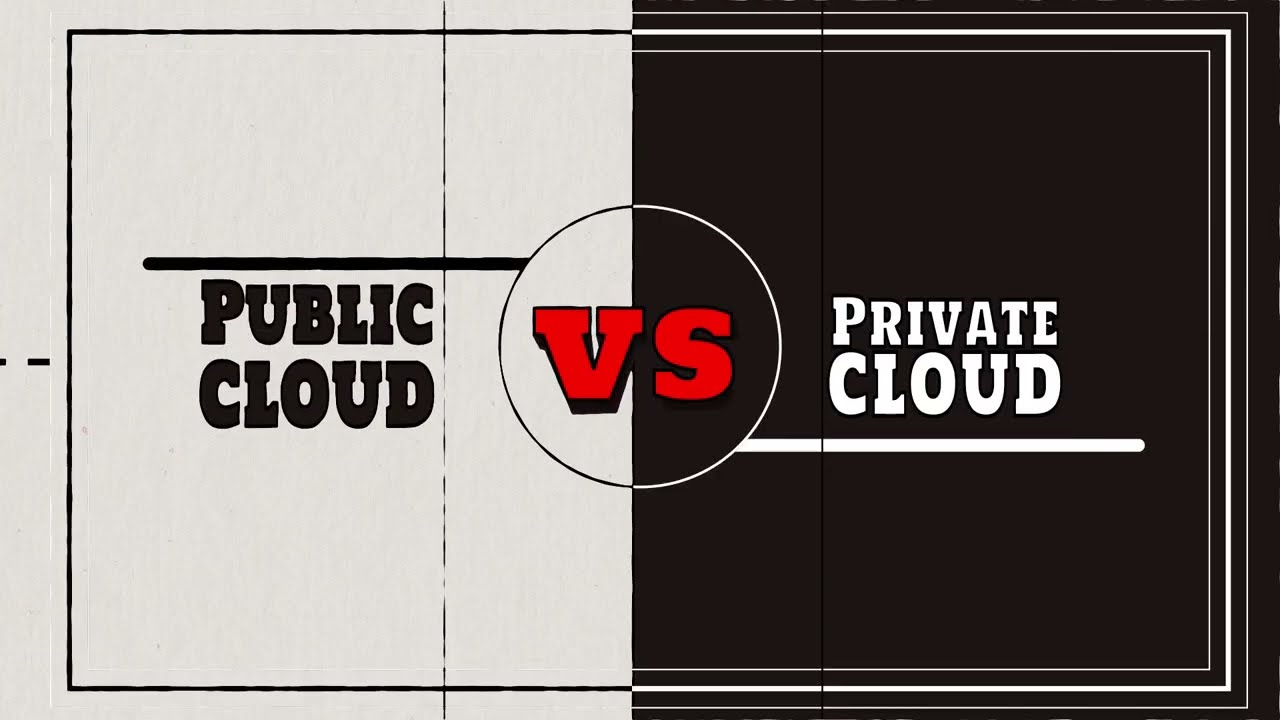
Public cloud and private cloud are two of the most popular cloud computing technologies available today. While the former offers scalability, flexibility, and cost-effectiveness, the latter provides security, control, and customization. But what if you could have the best of both worlds? That’s where public private cloud comes in.
In this article, we’ll take a closer look at public private cloud, its benefits, and how to use it. We’ll also provide some examples, comparisons, and advice on how to make the most out of this technology.

A public private cloud (PPC) is a hybrid cloud computing model that combines the benefits of public and private clouds. In a PPC, some resources are hosted in a public cloud infrastructure while others are hosted in a private cloud infrastructure. This allows organizations to take advantage of the scalability, cost savings, and flexibility of public clouds while maintaining control, security, and compliance of their sensitive data.
The public side of a PPC typically consists of resources such as web servers, email servers, and application servers that are used for non-sensitive data processing and storage. The private side, on the other hand, hosts critical business applications, databases, and customer information that require high levels of security and control.

There are several benefits of using a public private cloud:
One of the primary benefits of a PPC is scalability. Organizations can leverage the elasticity of the public cloud to handle peak workloads and seasonal spikes in demand while maintaining a secure, dedicated private cloud to run critical applications.
A PPC can help reduce costs by allowing organizations to move non-sensitive workloads to the public cloud, which is generally more cost-effective than a private cloud. By using a PPC, organizations can optimize their cloud spending while ensuring they have a secure, dedicated environment for critical applications.
A PPC provides the best of both worlds when it comes to security. Organizations can take advantage of the stringent security measures and compliance controls of a private cloud while leveraging the public cloud’s advanced threat protection and security intelligence capabilities.
A PPC offers flexibility by allowing organizations to choose which workloads to host in the public or private side of the cloud. This enables organizations to optimize their infrastructure to meet their specific business needs and requirements.

Using a public private cloud requires a careful evaluation of an organization’s workload requirements, security needs, and budget. Here are some steps to help you get started:

Here are some examples of how organizations have used public private clouds:
A healthcare organization may use a PPC to host its non-sensitive data in the public cloud, such as patient portals and appointment scheduling systems. Critical medical records and patient information would be stored in the private cloud to ensure compliance with HIPAA regulations.
An e-commerce company may use a PPC to host its web servers and customer-facing applications in the public cloud, while hosting its database and payment systems in the private cloud to ensure maximum security.
A financial services company may use a PPC to host its non-sensitive data such as marketing materials and client portals in the public cloud. Sensitive data such as financial reports and customer information would be hosted in the private cloud to ensure compliance with regulatory requirements.
Here are some comparisons between public private clouds and other cloud computing models:
Public clouds are more cost-effective than private clouds, but they may not provide the same level of security and control. A PPC provides the benefits of both public and private clouds, allowing organizations to optimize their costs and ensure security.
Private clouds provide the highest level of control and security, but they can be expensive to implement and maintain. A PPC offers scalability, flexibility, and cost savings, while still providing the security and control of a private cloud.
A hybrid cloud combines public and private clouds, but it may not provide the same level of control and customization as a PPC. With a PPC, organizations have more control over which workloads are hosted in the public or private side of the cloud, allowing them to optimize their infrastructure for their specific business needs.
Here are some tips to help you make the most out of your PPC:
Before implementing a PPC, carefully evaluate your workload requirements, security needs, and budget. Consider which workloads are suitable for the public or private side of the cloud and develop a deployment strategy that aligns with your business goals.
When choosing a cloud provider, look for one that offers both public and private cloud options and has a proven track record of providing secure, reliable services. Make sure they offer robust security measures and compliance controls, such as data encryption and access controls.
One of the main benefits of a PPC is its flexibility. Take advantage of this by optimizing your infrastructure to meet your specific business needs. Evaluate your workloads regularly and adjust your deployment strategy as needed to ensure optimal performance and cost-effectiveness.
Continuous monitoring is essential to ensuring optimal performance and security. Regularly review your policies and procedures to ensure they align with best practices and compliance requirements. Use cloud management tools to automate monitoring and alerting to help you stay on top of any potential issues.
Public private cloud is the perfect blend of security and flexibility. It allows organizations to take advantage of the scalability and cost savings of public clouds while maintaining control, security, and compliance of their sensitive data. By carefully evaluating your workload requirements, choosing the right provider, and optimizing your infrastructure, you can make the most out of your PPC and ensure long-term success for your organization.